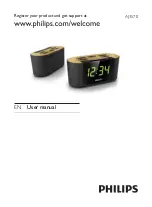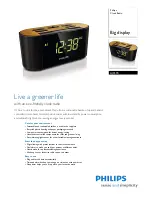
IFP-2000 Installation Manual
5-12
151430
5.5.1
Setting the Network Terminators at Panel DIP
Switches and Repeater Jumpers
Use the following steps for determining DIP switch and jumper settings.
1. DIP switch positions 8 through 10 on the control panel are used for direct connect network
BUS termination. When a panel is located at the end of a direct connect BUS and it does
NOT have a repeater connected, DIP switches 8, 9 and 10 must be ON. When a panel is
not direct connected to other panels, but a repeater is used to network the panel, its DIP
switches 8, 9, and 10 must be ON. Otherwise, DIP switches 8, 9 and 10 are always OFF.
2. Jumper J1 on the network repeater is used for termination between the panel and the
repeater. Jumper J1 must always be present (jumper is ON).
3. Jumpers J2 and J3 for the network repeater should be present (jumper is ON) only when a
twisted pair is connected to terminals 1 and 2 of terminal block TB1. Jumpers J2 and J3
are used to enable earth ground fault monitoring at terminals 1 and 2 of terminal block
TB1.
4. It is a requirement that an insulated wire be run between the network repeater terminal
TB2 and an earth grounding screw at the control panel for all network repeater installa-
tions.
The following text details how the panel and repeater terminators must be set
for the network example in Figure 5-10.
Panel 1 is at the end of a direct connect BUS and it does not have a repeater, so its DIP
switches 8, 9 and 10 must be ON to provide direct connect BUS termination.
Panel 2 is NOT at the end of a direct connect BUS so its DIP switches 8, 9 and 10 must be
OFF.
Note: A repeater would not be allowed to be connected to panel 2 in this example because it is not at the end of
a direct connect BUS.
Panel 3 looks like it is at the end of a direct connect BUS, but because it has a repeater
connected to it, DIP switches 8, 9 and 10 at panel 3 must be OFF. The direct connect BUS
termination is provided by the repeater through jumper J1. Recall that jumper J1 must placed
(ON) as this is the rule for ALL repeaters. Jumpers J2 and J3 on the repeater of panel 3 must
be OFF because no wires are connected to the repeater twisted pair terminals 1 and 2 of TB1.
Panel 4 is not directly connected to other panels but it is effectively direct connected to its
repeater which electrically behaves the same as a direct connected BUS between panels.
Because panel 4 is connected only to its repeater its DIP switches 8, 9 and 10 at panel 2 must
be ON to provide direct connect BUS termination. Jumper J1 of the repeater must also be
placed (ON) to provide the other direct connect BUS termination and because the rule for
repeaters is that Jumper J1 must always be placed (ON). Repeater jumpers J2 and J3 must be
placed (ON) because a wired twisted pair is connected to terminals 1 and 2 of TB1.
Connecting these jumpers enables earth ground fault monitoring of the twisted pair wire
between the repeater of panel 4 and panel 3.
Содержание IFP-2000
Страница 2: ......
Страница 12: ...IFP 2000 Installation Manual viii...
Страница 22: ...IFP 2000 Installation Manual 1 10 151430...
Страница 26: ...IFP 2000 Installation Manual 2 4 151430...
Страница 31: ...Before You Begin Installing 151430 3 5 Figure 3 1 Wire Routing Example...
Страница 100: ...IFP 2000 Installation Manual 5 14 151430...
Страница 124: ...IFP 2000 Installation Manual 8 8 151430 Figure 8 4 Example of Zone Events Mapped to output Groups and Patterns...
Страница 125: ...Programming Overview 151430 8 9 Figure 8 5 Example of Zone Events Mapped to Output Groups and Patterns on a Single Panel...
Страница 194: ...IFP 2000 Installation Manual 10 20 151430...
Страница 210: ...IFP 2000 Installation Manual 12 8 151430...
Страница 215: ...Installation Records 151430 13 5 Module Addr Zone Group Description Module Addr Zone Group Description...
Страница 230: ...IFP 2000 Installation Manual A 14...
Страница 232: ...IFP 2000 Installation Manual B 2 151430...
Страница 236: ......
Страница 237: ......
















































